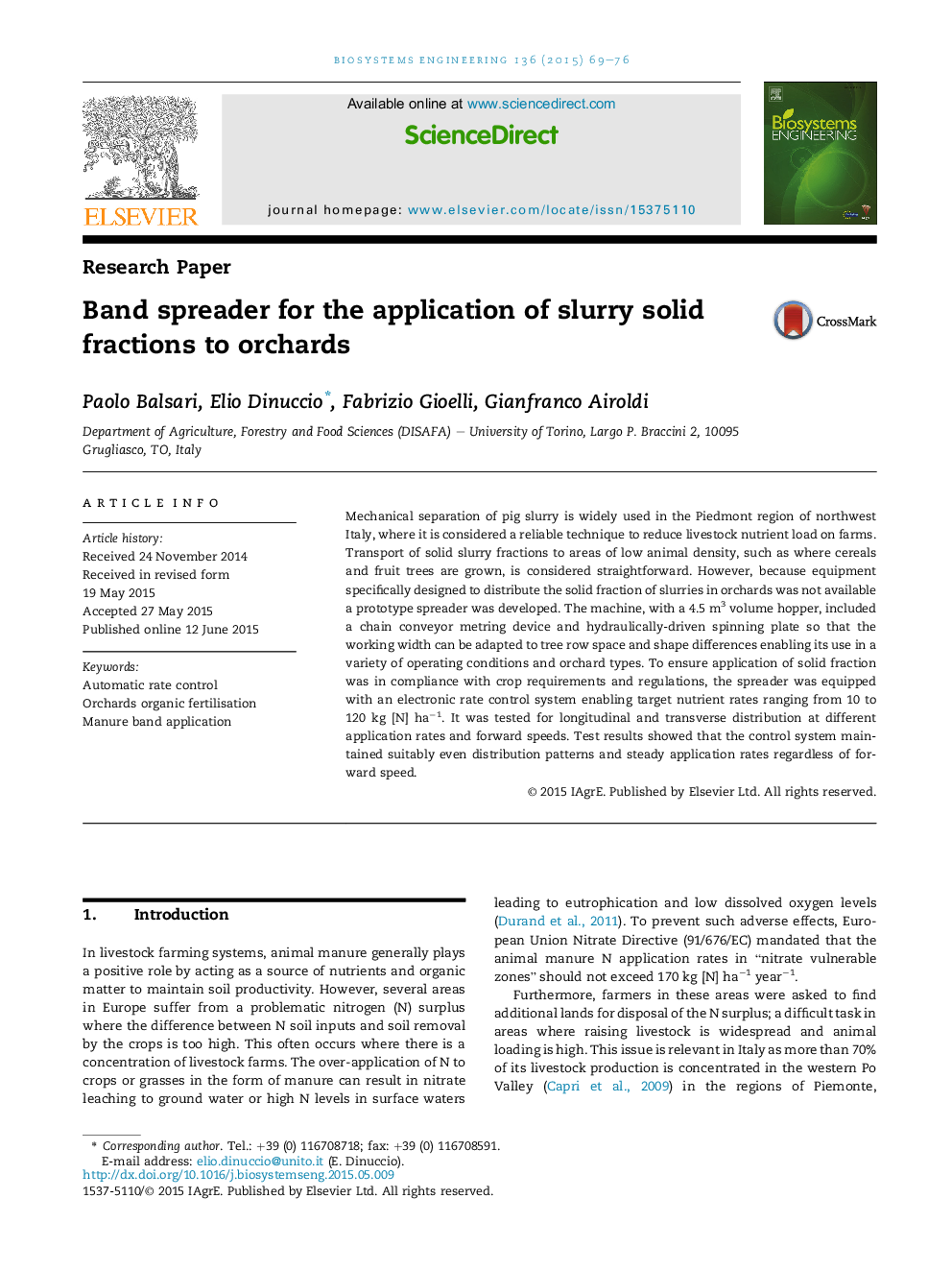| Article ID | Journal | Published Year | Pages | File Type |
|---|---|---|---|---|
| 1711017 | Biosystems Engineering | 2015 | 8 Pages |
•Prototype spreader for solid fraction application in orchards was designed and tested.•With pig slurry a steady application rate was maintained regardless of forward speed.•Spreader evenly distributed manure, both transversally and longitudinally.•Best transverse distribution pattern (CV < 15%) was at 30° disk inclination.•Spreader delivered required application rates in the 20–60 kg [N] ha−1 range.
Mechanical separation of pig slurry is widely used in the Piedmont region of northwest Italy, where it is considered a reliable technique to reduce livestock nutrient load on farms. Transport of solid slurry fractions to areas of low animal density, such as where cereals and fruit trees are grown, is considered straightforward. However, because equipment specifically designed to distribute the solid fraction of slurries in orchards was not available a prototype spreader was developed. The machine, with a 4.5 m3 volume hopper, included a chain conveyor metring device and hydraulically-driven spinning plate so that the working width can be adapted to tree row space and shape differences enabling its use in a variety of operating conditions and orchard types. To ensure application of solid fraction was in compliance with crop requirements and regulations, the spreader was equipped with an electronic rate control system enabling target nutrient rates ranging from 10 to 120 kg [N] ha−1. It was tested for longitudinal and transverse distribution at different application rates and forward speeds. Test results showed that the control system maintained suitably even distribution patterns and steady application rates regardless of forward speed.
